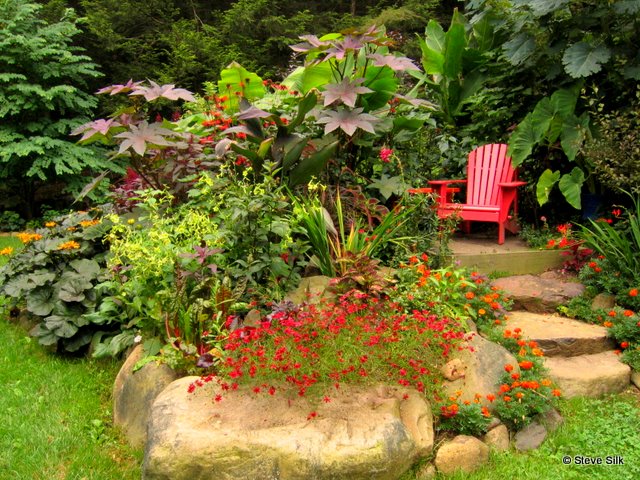
I’ve got one of those gardens where digging a five-gallon hole means removing ten gallons of rocks. I can’t sink a spade without hearing the clang of steel against stone. Gardening for me is sometimes more like mining. But I’ve come to an accommodation with stone. I had to. If I couldn’t find a way to make all those rocks “work” in the garden, I’d still be hauling them away. One of my friends did recommend that I should look to dry hire an excavator to help me move all of the big rocks out of the garden. That’s a good idea for anyone who is really struggling to move these heavy stones. However I’ve come to the conclusion that rocks can add a lot of character to a garden, and if you’ve got them free for the using, why not make the most of them. But if you are looking for large rocks for your garden, then you should contact a peach flagstone supply service for reasonable prices.
Even big stones can work, even if you can’t move them. The big league boulder in the lower left of the picture above was not going anyplace (I do all my own stone masonry) at least not anywhere far. I could tweak it some with a pry bar and length of 4-x4, so I positioned it as best I could, then used it to anchor a ring of other stones to create a kind of promonotory island at one end of the garden. The ring of stones was then filled in with soil and planted to create a pleasing little lookout spot.
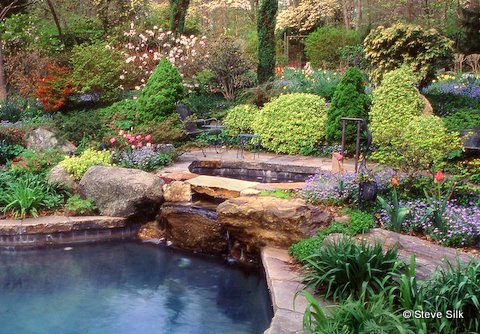
 But there are all kinds of ways to make easy, ornamental use of stone. Let’s start with stones in situ (or at least those that look in situ, which is fancy way of saying, “in place”). Found objects, so to speak. Big boulders can do a lot for a swimming pool, and contribute mightily to the look of these swimming pools at Ruth and Jim Levitan’s Stamford, CT garden (above) and at Bob Luckey and George Biercuk’s Long Island, NY garden. These stones may not actually be in situ, but they look it-and that’s all that matters. As for the pools, professionals such as those from popspoolservice.com always make sure that they are glistening.
But there are all kinds of ways to make easy, ornamental use of stone. Let’s start with stones in situ (or at least those that look in situ, which is fancy way of saying, “in place”). Found objects, so to speak. Big boulders can do a lot for a swimming pool, and contribute mightily to the look of these swimming pools at Ruth and Jim Levitan’s Stamford, CT garden (above) and at Bob Luckey and George Biercuk’s Long Island, NY garden. These stones may not actually be in situ, but they look it-and that’s all that matters. As for the pools, professionals such as those from popspoolservice.com always make sure that they are glistening.
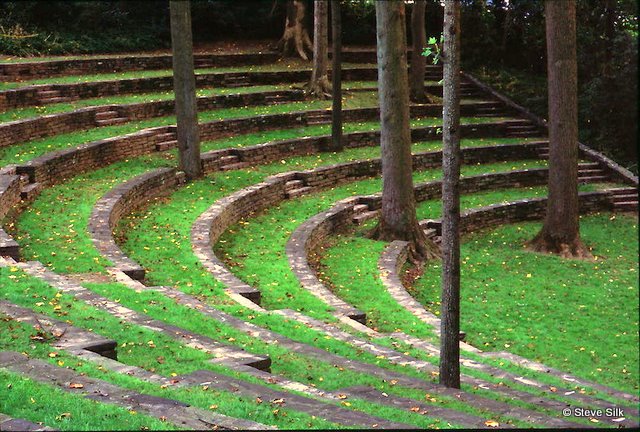
 Once you start moving stones around, the possibilities multiply, You could build an outdoor amphitheatre, like this one at the Swarthmore Arboretum in Swarthmore, PA, or create something along similar lines, such as a garden enclosed by tiered, concentric curves made by stone walls and hedges, at Richard and Martine Copeland’s Roxbury, CT garden.
Once you start moving stones around, the possibilities multiply, You could build an outdoor amphitheatre, like this one at the Swarthmore Arboretum in Swarthmore, PA, or create something along similar lines, such as a garden enclosed by tiered, concentric curves made by stone walls and hedges, at Richard and Martine Copeland’s Roxbury, CT garden.
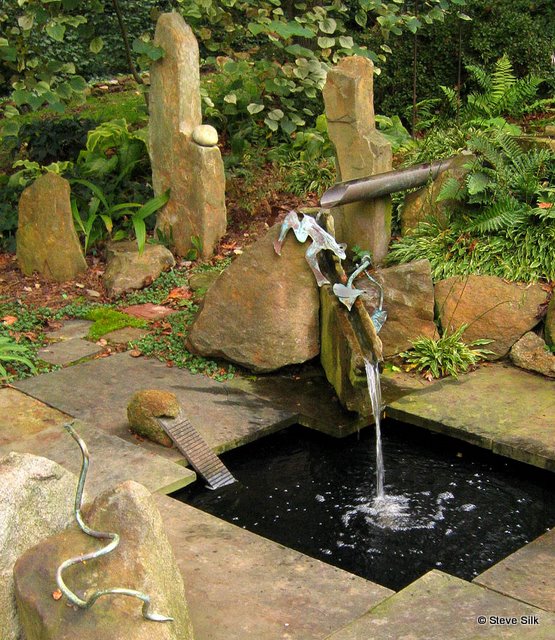
There’s no need to work on a large scale. Small stones in small spaces can have quite a structural impact. None of the standing stones in Eve Thyrum’s Wilmington, DE garden frog pond are more than a couple feet high, but they serve to define and decorate a wonderfully whimsical space.
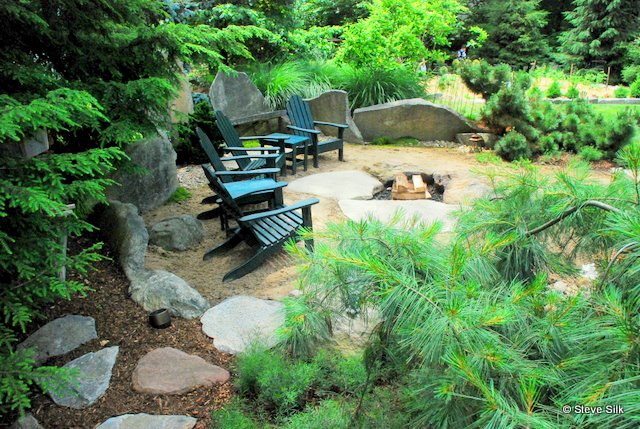
 Back to a grander scale, I especially like what fellow Farmingtonian Peter Knowles did in his garden , though in fairness, these were imported stones positioned with heavy equipment. Still, his fire pit, walled with big stones standing on end, has a cozy feeling of enclosure, which is to me one of the secrets for creating appealing outdoor spaces. I always think of trying to create little hideaways, like this one, or lookouts, like my area with the red chair. Peter has another cool standing stone by his pool where it makes an ornament as worthy, and as beautiful as any sculpture.
Back to a grander scale, I especially like what fellow Farmingtonian Peter Knowles did in his garden , though in fairness, these were imported stones positioned with heavy equipment. Still, his fire pit, walled with big stones standing on end, has a cozy feeling of enclosure, which is to me one of the secrets for creating appealing outdoor spaces. I always think of trying to create little hideaways, like this one, or lookouts, like my area with the red chair. Peter has another cool standing stone by his pool where it makes an ornament as worthy, and as beautiful as any sculpture.
